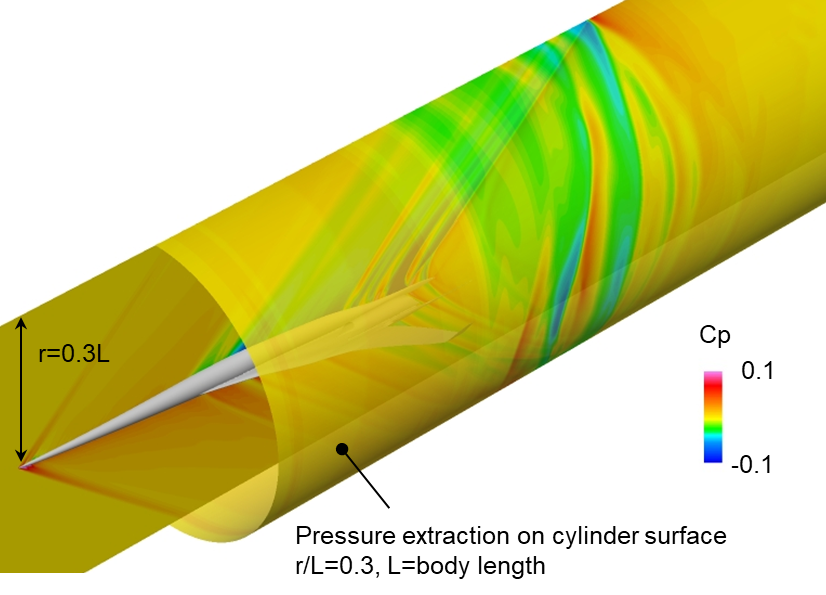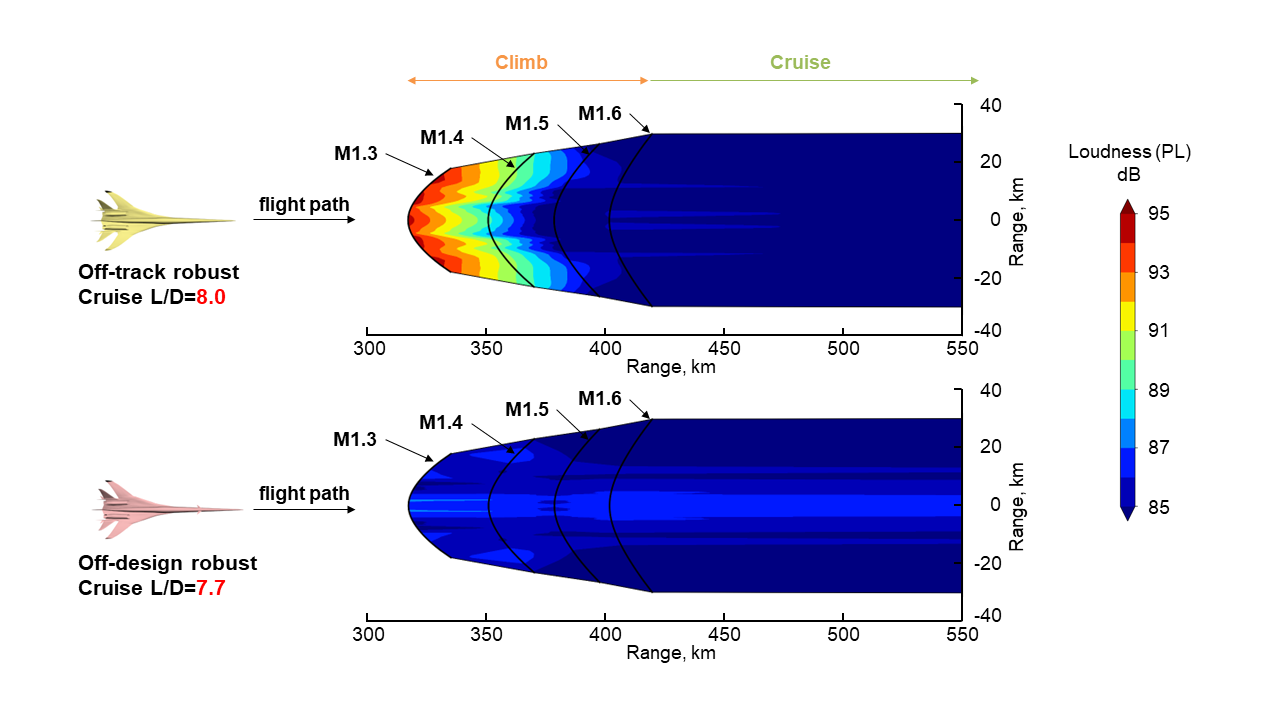Research and development for system integration of silent supersonic airplane technologies
JAXA Supercomputer System Annual Report February 2023-January 2024
Report Number: R23EA3800
Subject Category: Aeronautical Technology
- Responsible Representative: Yoshikazu Makino, Aviation Technology Directorate, Silence Supersonic Aircraft Team
- Contact Information: Hiroaki Ishikawa(ishikawa.hiroaki2@jaxa.jp)
- Members: Junichi Akatsuka, Hiroaki Ishikawa, Shinya Koganezawa, Masashi Kanamori, Satoshi Kondo, Ryo Shimada, Hajime Miki, Yusuke Naka, Kensuke Soneda, Hisato Takeda, Atsushi Ueno, Tatsunori Yuhara
Abstract
It is important to acquire world-class high level technology in order to enhance the international competitiveness of Japan’s aircraft manufacturing industry, especially for supersonic transport. In addition, the advantage is great, such as revitalizing economic activities from the business and tourism aspects by shortening the travel time of supersonic flight, and the health aspects of passengers such as suppression of economy class syndrome. Based on this, the purpose of this project is to acquire the key technologies required to realize a “quiet supersonic aircraft” and contribute to the development of the aircraft manufacturing industry and air transport in the future. In this project, R&D on sonic boom estimation, measurement and evaluation technologies will contribute to the formulation of international standards at ICAO required for over land supersonic flight. The integrated design technology that simultaneously satisfies both low boom, low drag, low noise and weight reduction are developed to present a concept of a supersonic transport that simultaneously satisfies these technical goals.
Reference URL
Please refer to https://www.aero.jaxa.jp/eng/research/frontier/sst/ .
Reasons and benefits of using JAXA Supercomputer System
To develop a future supersonic transport that satisfies the requirement of low sonic-boom and low aerodynamic drag, it is necessary to estimate aerodynamic properties and sonic-boom properties by accurate numerical simulation. JSS is used to estimate aerodynamic performances of various configurations with high accuracy and high efficiency for the designing of the low-boom supersonic transport.
Achievements of the Year
In a low-boom design, it is reported that a conventional low-boom design in which sonic boom loudness only at the under-track position at the cruise condition is reduced is not adequate and a robust low-boom design is needed to reduce sonic boom loudness in whole primary boom carpet where sonic booms directly hit the ground considering sonic boom loudness at off-track positions and off-design conditions such as climb and descent phases. In this study, CFD is performed to evaluate a flow field around an aircraft (Fig. 1), and a robust design method based on CFD result and utilizing equivalent area distributions and Mach planes is developed, which enables to reduce sonic boom loudness in whole primary boom carpet. Sonic boom loudness distributions in a primary boom carpet are numerically evaluated for two types of robust low-boom design. One is to reduce loudness at both under-track and off-track positions only at the cruise condition and the other is to reduce loudness in whole primary boom carpet. This result was presented at Acoustics 2023.
Publications
– Oral Presentations
Ueno, A., Ishikawa, H., Koganezawa, S., and Makino, Y., “Robust sonic boom reduction in primary boom carpet,” Acoustics 2023, 2023.
Usage of JSS
Computational Information
- Process Parallelization Methods: MPI
- Thread Parallelization Methods: Automatic Parallelization
- Number of Processes: 960 – 3840
- Elapsed Time per Case: 100 Hour(s)
JSS3 Resources Used
Fraction of Usage in Total Resources*1(%): 1.03
Details
Please refer to System Configuration of JSS3 for the system configuration and major specifications of JSS3.
| System Name | CPU Resources Used(Core x Hours) | Fraction of Usage*2(%) |
|---|---|---|
| TOKI-SORA | 19023560.06 | 0.86 |
| TOKI-ST | 442932.11 | 0.48 |
| TOKI-GP | 10688.50 | 0.14 |
| TOKI-XM | 24827.58 | 13.60 |
| TOKI-LM | 77543.43 | 5.91 |
| TOKI-TST | 0.00 | 0.00 |
| TOKI-TGP | 0.00 | 0.00 |
| TOKI-TLM | 0.00 | 0.00 |
| File System Name | Storage Assigned(GiB) | Fraction of Usage*2(%) |
|---|---|---|
| /home | 526.33 | 0.44 |
| /data and /data2 | 30215.67 | 0.19 |
| /ssd | 0.00 | 0.00 |
| Archiver Name | Storage Used(TiB) | Fraction of Usage*2(%) |
|---|---|---|
| J-SPACE | 20.80 | 0.07 |
*1: Fraction of Usage in Total Resources: Weighted average of three resource types (Computing, File System, and Archiver).
*2: Fraction of Usage:Percentage of usage relative to each resource used in one year.
ISV Software Licenses Used
| ISV Software Licenses Used(Hours) | Fraction of Usage*2(%) | |
|---|---|---|
| ISV Software Licenses(Total) | 21231.82 | 9.58 |
*2: Fraction of Usage:Percentage of usage relative to each resource used in one year.
JAXA Supercomputer System Annual Report February 2023-January 2024




